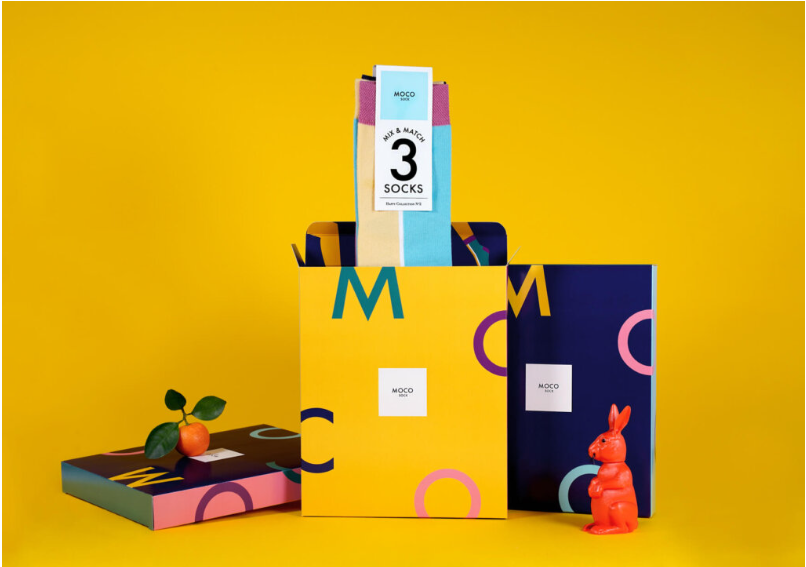
In the fast-paced world of retail, where countless products vie for consumer attention, the packaging has emerged as a vital element of marketing strategy.
Custom packaging is not merely a protective layer; it’s a canvas for storytelling. Effective packaging can encapsulate your brand’s identity, values, and narrative, creating an emotional connection with customers and driving loyalty.
In this blog post, we will explore how to design custom packaging that tells your brand story, resonating deeply with your audience and ultimately driving sales.
Understanding Your Brand Story
Before diving into the design process, it’s essential to have a clear understanding of your brand story.
Your brand story encompasses your mission, values, history, and the unique aspects that set you apart from competitors. Here’s how to articulate your brand story effectively:
1. Define Your Mission and Values
Begin by identifying the core mission of your business.
What are you trying to achieve? What values guide your operations?
For example, if your mission revolves around sustainability, this theme should resonate throughout your packaging design.
2. Know Your Audience
Understanding your target audience is crucial for effective storytelling.
What are their needs, desires, and pain points?
How do they connect with brands on an emotional level? Conduct market research and gather insights about your audience to tailor your packaging design accordingly.
3. Highlight Your Unique Selling Proposition (USP)
Your USP is what differentiates you from competitors.
Whether it’s handcrafted products, locally sourced materials, or innovative designs, make sure your packaging reflects this uniqueness.
Clearly communicate your USP on the packaging to capture consumer interest and drive engagement.
Elements of Storytelling Through Packaging Design
Once you have a solid grasp of your brand story, it’s time to translate that narrative into packaging design. Here are key elements to consider:
1. Visual Aesthetics
Visual elements are the first point of contact between your product and potential customers. The design should be eye-catching and align with your brand identity.
Here are a few aspects to focus on:
- Color Palette: Colors evoke emotions and can significantly influence consumer behavior. Choose a color palette that reflects your brand’s personality. For instance, earthy tones may convey sustainability, while vibrant colors could represent creativity and innovation.
- Typography: The font you choose can communicate different aspects of your brand. A modern sans-serif may convey a sleek, contemporary brand, while a handwritten font may evoke a sense of warmth and personalization.
- Imagery: Use imagery that resonates with your brand story. Whether it’s photographs, illustrations, or graphics, ensure they align with your message. For example, a beauty brand may use high-quality images of ingredients to convey purity and luxury.
2. Materials and Texture
The materials you choose for your packaging can enhance your brand story. The texture can evoke emotions and create a sensory experience.
Consider the following:
- Eco-Friendly Materials: If sustainability is part of your brand story, opt for biodegradable or recyclable materials. This choice not only resonates with eco-conscious consumers but also communicates your commitment to the environment.
- Unique Textures: Experiment with different textures to create an engaging unboxing experience. Textured finishes, embossed logos, or matte coatings can add depth to your packaging and make it feel premium.
3. Functional Design
Custom packaging should be functional and user-friendly.
Consider the following aspects:
- Easy Opening and Reclosing: Design packaging that is easy to open without compromising security. If your product requires resealing, incorporate features that allow customers to do so effortlessly.
- Space for Instructions: Ensure that your packaging has adequate space for essential information, such as usage instructions, care guidelines, or ingredients. This transparency builds trust with your customers.
Crafting a Narrative Through Packaging
Packaging design can tell a story through visuals and messaging.
Here’s how to effectively craft that narrative:
1. Use Brand Messaging
Incorporate your brand’s messaging directly onto the packaging.
This could include taglines, quotes, or even a brief brand history. Ensure that your messaging aligns with your overall brand story and resonates with your target audience.
2. Create a Sense of Journey
Consider designing packaging that takes customers on a journey.
For example, you could use a series of illustrations or infographics that depict the production process, from sourcing materials to creating the final product.
This narrative not only informs customers but also creates a sense of connection with your brand.
3. Evoke Emotions
Successful storytelling evokes emotions.
Use your packaging to inspire joy, nostalgia, or excitement.
For example, a reworked custom lotion label for a skincare brand might incorporate soft colors and playful graphics to create a sense of delight and indulgence.
Incorporating Customer Interaction
Engaging customers through packaging is an excellent way to enhance their experience and solidify their connection with your brand.
Here are some ideas to encourage interaction:
1. QR Codes and Augmented Reality
Integrating technology into your packaging design can bridge the gap between the physical and digital worlds.
Consider incorporating QR codes that lead customers to exclusive content, such as tutorials, behind-the-scenes videos, or even AR experiences that bring your brand story to life.
2. Social Media Integration
Encourage customers to share their unboxing experiences on social media. Include branded hashtags or prompts on your packaging that invite them to showcase your products online.
This creates a sense of community and expands your brand reach through user-generated content.
3. Personalization Options
Consider offering personalization options for your packaging.
Allowing customers to add their names or customize elements can create a memorable experience that resonates deeply.
For instance, a personalized thank-you note inside the package adds a human touch that enhances customer loyalty.
Testing and Feedback
Designing custom packaging that tells your brand story is an iterative process. Here’s how to gather feedback and make improvements:
1. Prototyping
Create prototypes of your packaging design before full-scale production. This allows you to test functionality, aesthetics, and customer interaction.
Gather feedback from focus groups or trusted customers to identify areas for improvement.
2. Monitor Customer Responses
Once your packaging is in circulation, monitor customer responses. Pay attention to reviews and social media mentions.
Are customers sharing their experiences? Are they commenting on the packaging? Use this feedback to refine your design and address any concerns.
The Power of Storytelling Through Packaging
Custom packaging is an invaluable asset for small businesses looking to differentiate themselves in a competitive marketplace.
By designing packaging that tells your brand story, you can create an emotional connection with customers, enhance their experience, and ultimately drive sales. You can start with a lean budget by leveraging free resources online.
From defining your brand narrative to integrating technology and gathering feedback, every step is an opportunity to showcase your unique identity.
Remember, packaging is not just a protective layer; it’s a powerful tool for storytelling. So, as you embark on your custom packaging journey, let your brand’s story shine through every element.
Are you ready to transform your packaging into a storytelling masterpiece?

